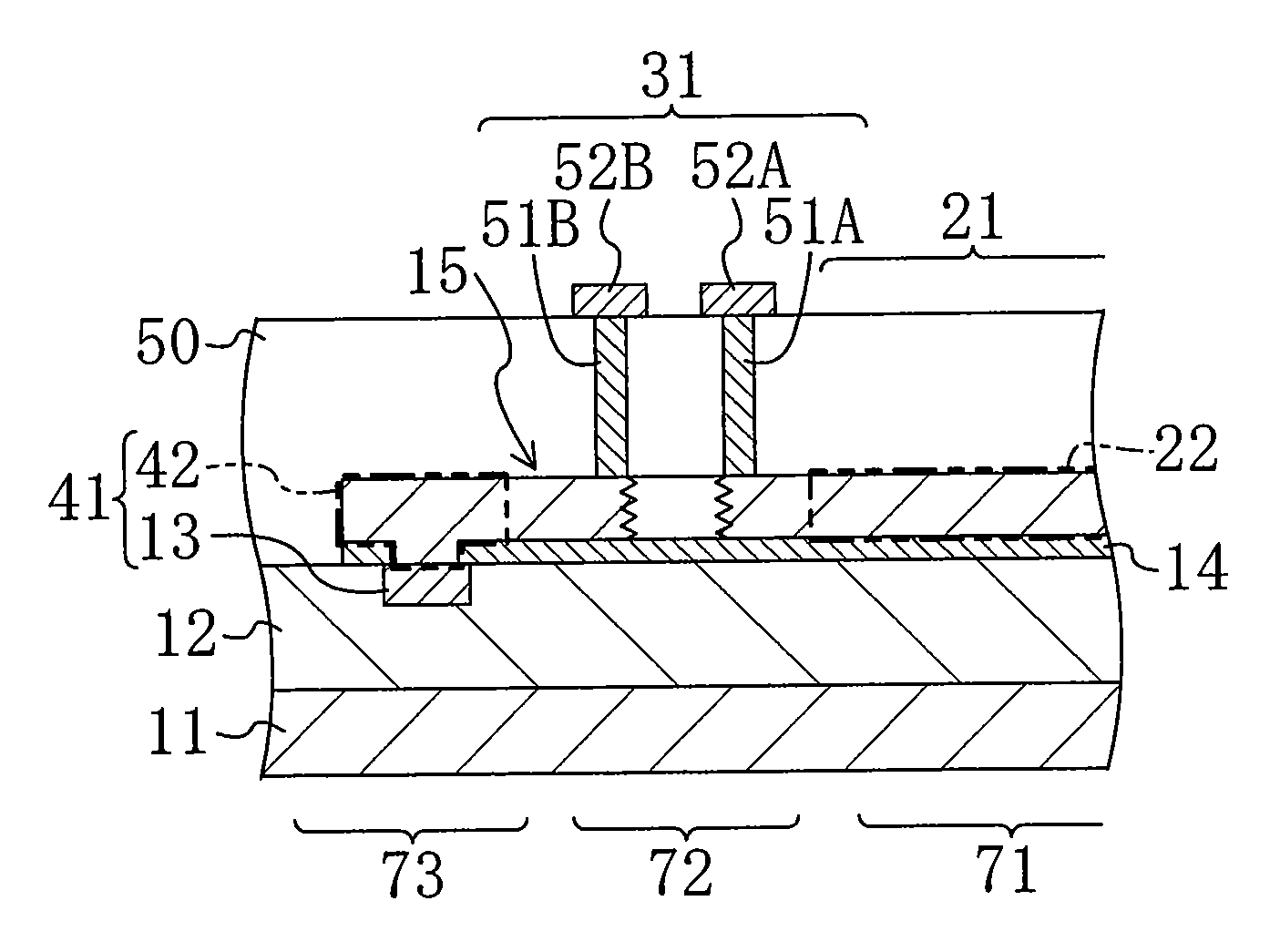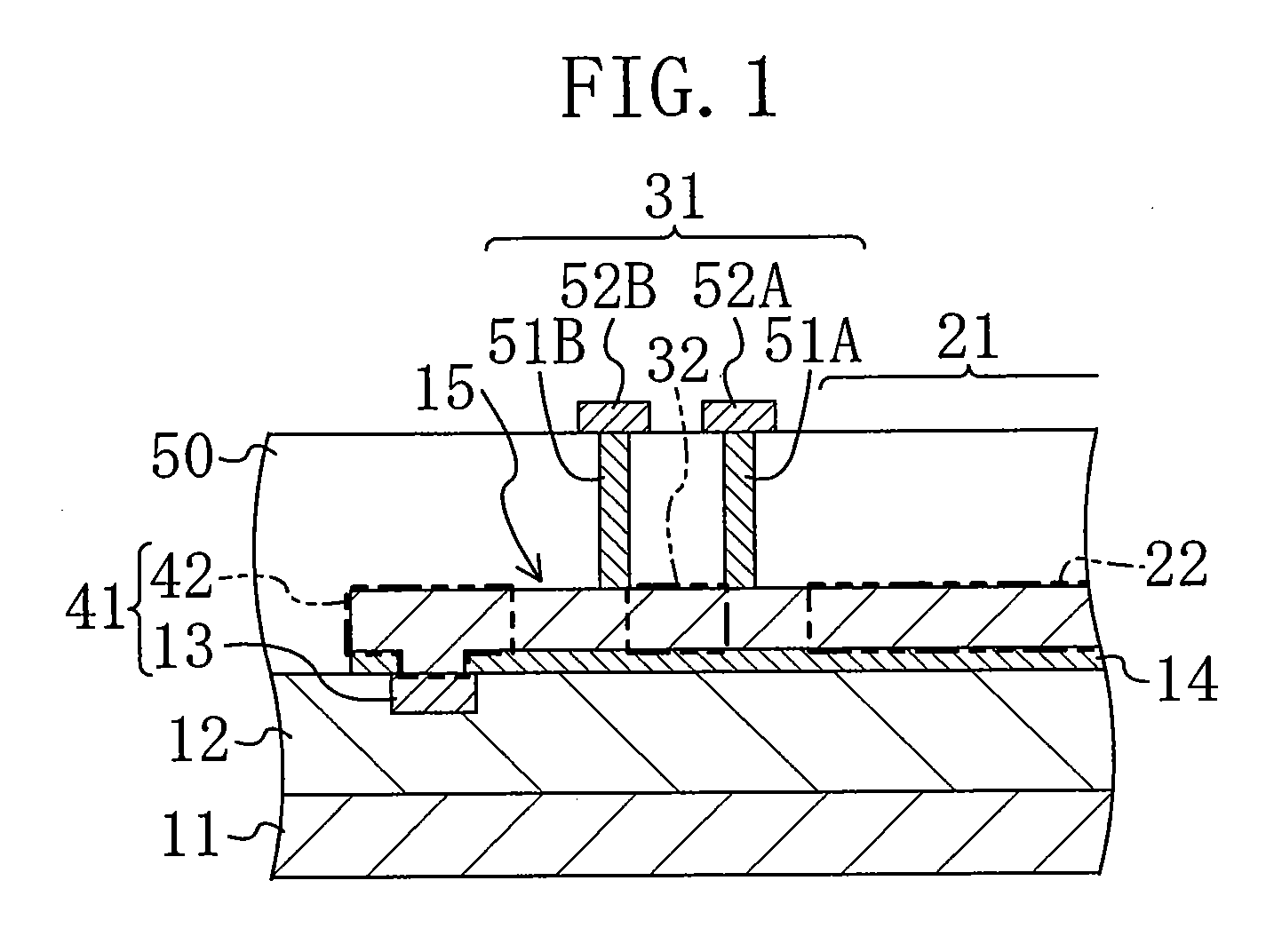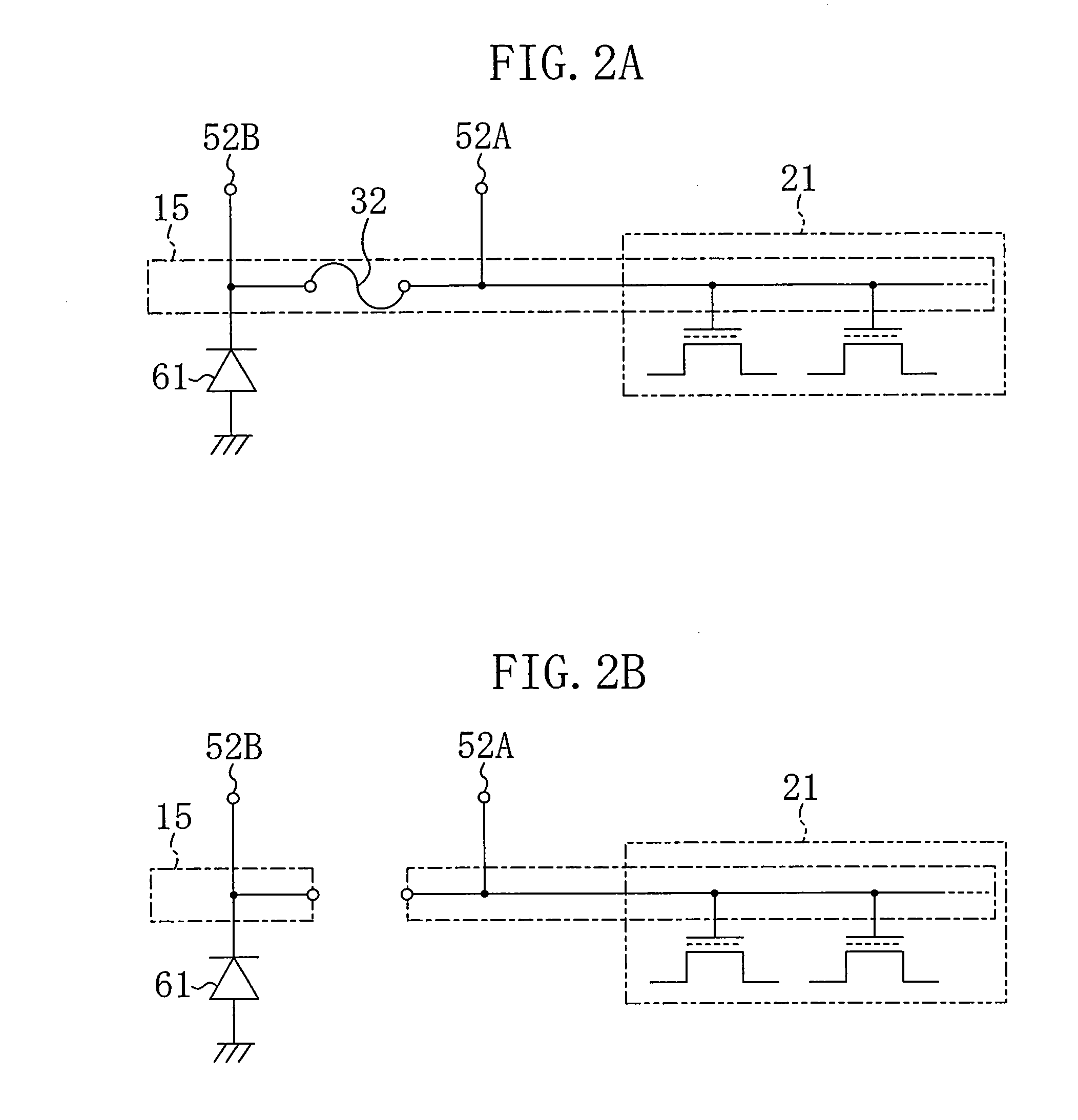Semiconductor device and method for manufacturing the same
a semiconductor and device technology, applied in semiconductor devices, semiconductor/solid-state device details, electrical equipment, etc., can solve the problems of difficult removal of charges injected as a result of a charge-up phenomenon during a diffusion process, memory element cannot be protected from a charge-up, and the protection effect is not achieved
- Summary
- Abstract
- Description
- Claims
- Application Information
AI Technical Summary
Benefits of technology
Problems solved by technology
Method used
Image
Examples
embodiment 1
[0030]Embodiment 1 of the present invention is described below with reference to the drawings. FIG. 1 shows a sectional structure of a semiconductor device of Embodiment 1. As shown in FIG. 1, the semiconductor device of the present embodiment includes a protection target element 21, a fuse structure 31 and a substrate connecting part 41.
[0031]The protection target element 21 is, for example, a nonvolatile memory formed on a first conductivity type semiconductor substrate 11 made of silicon (Si). In FIG. 1, only part of the protection target element 21 is shown, i.e., a protection target element electrode 22. The protection target element electrode 22 may be, for example, a gate electrode of a memory element. The fuse structure 31 has a fuse film 32 which is configured to be torn by applying a current thereto. The substrate connecting part 41 includes a substrate connecting electrode 42 connected to the semiconductor substrate 11.
[0032]The protection target element electrode 22, the...
embodiment 2
[0051]Embodiment 2 of the present invention is described with reference to the drawings.
[0052]FIG. 8 shows a sectional structure of a semiconductor device of Embodiment 2. In FIG. 8, like reference numerals are used to refer to like elements shown in FIG. 1 so as to avoid repetition of the description.
[0053]In the semiconductor device of Embodiment 2, a conductive film 15 includes a lower conductive film 15A and an upper conductive film 15B. A fuse film 32 does not include the lower conductive film 15A but is made of only the upper conductive film 15B formed on a fuse insulating film 33.
[0054]According to the semiconductor device of Embodiment 2, part of the conductive film corresponding to the fuse film 32 is reduced in thickness to increase the resistance.
[0055]Therefore, as compared with the semiconductor device of Embodiment 1, the fuse film 32 is torn more easily.
[0056]Hereinafter, a method for manufacturing the semiconductor device of Embodiment 2 is described with reference t...
PUM
 Login to View More
Login to View More Abstract
Description
Claims
Application Information
 Login to View More
Login to View More - R&D
- Intellectual Property
- Life Sciences
- Materials
- Tech Scout
- Unparalleled Data Quality
- Higher Quality Content
- 60% Fewer Hallucinations
Browse by: Latest US Patents, China's latest patents, Technical Efficacy Thesaurus, Application Domain, Technology Topic, Popular Technical Reports.
© 2025 PatSnap. All rights reserved.Legal|Privacy policy|Modern Slavery Act Transparency Statement|Sitemap|About US| Contact US: help@patsnap.com



